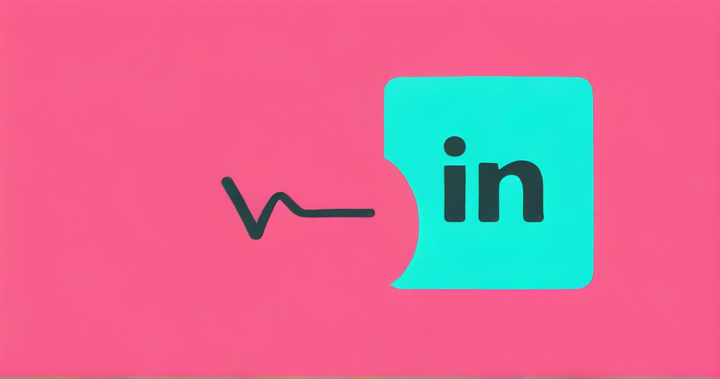Video Podcasts: Why Your Podcast Should Always Have Video
Video podcasting is the new frontier. Learn why video podcasts are on the rise and how to reach new audiences by adding video to your podcast.
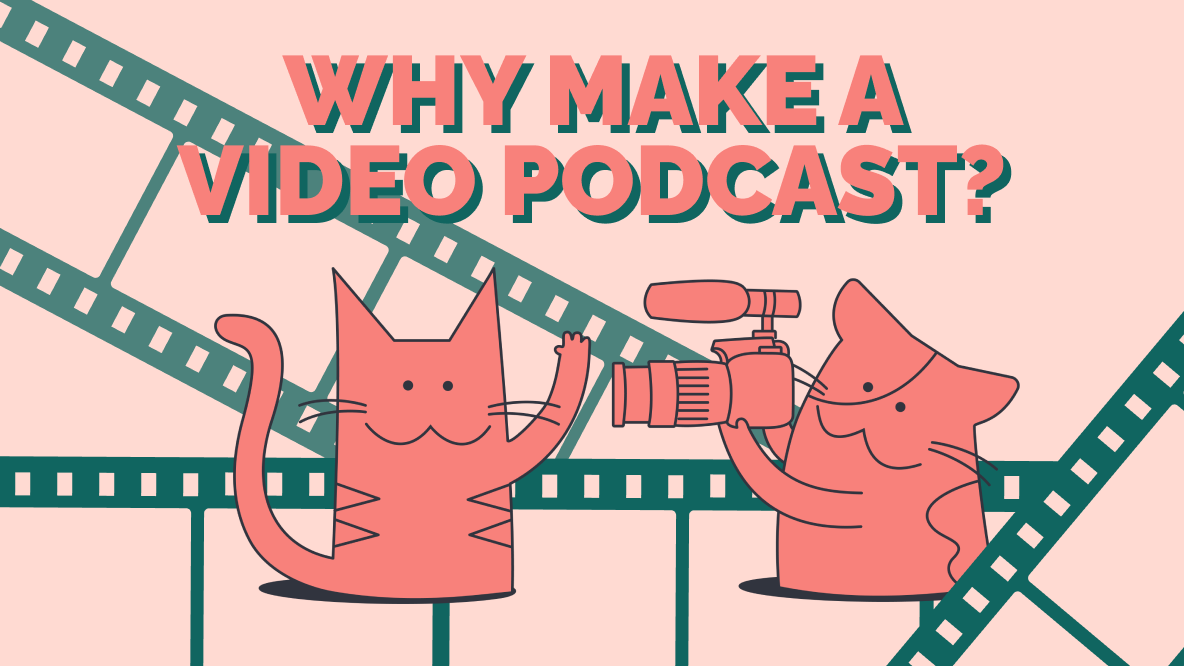
The rise of video has disrupted every facet of life online, including the podcast market. And if you make podcasts, that’s good news. Your potential audience is bigger than ever.
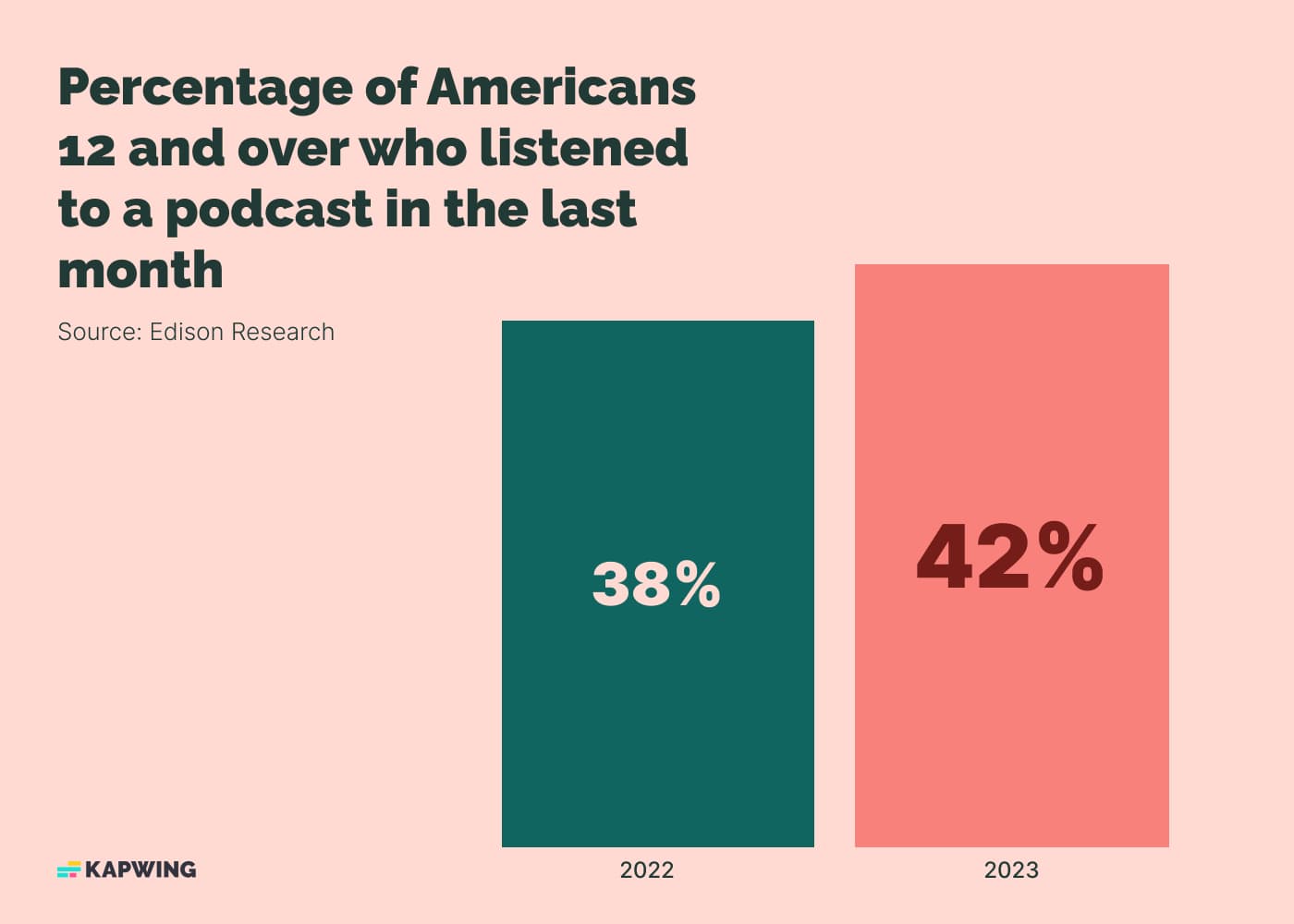
Podcast interest is at an all-time high, with 42% of Americans 12 and over having listened to one in the last month in 2023, according to Edison Research. That’s up from 38% in 2022. And 64% of people in the US have listened to a podcast at least once.
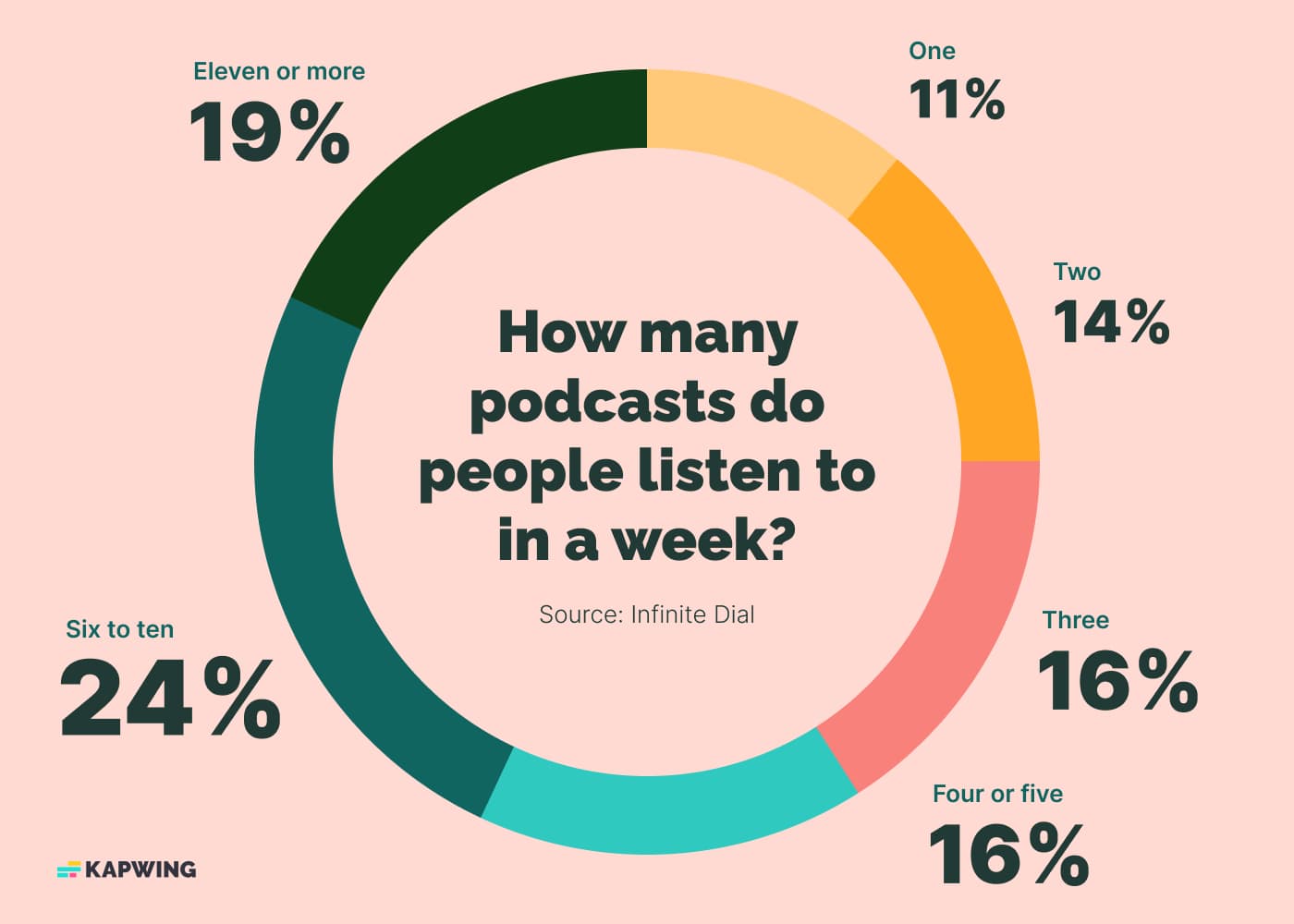
Even better, regular listeners tend to stream multiple episodes every week. On average, listeners reported consuming an average of nine podcast episodes in the last week with the most dedicated listeners (a stunning 19%) listening to 11 or more episodes. Since most shows only put out one episode a week, that means diehard podcast fans are likely listening to multiple podcasts on rotation.
Podcasters are eager to fill that demand, too. There are over 5 million podcast titles listed on Spotify, totalling over 70 million episodes.
One of the biggest podcasting trends – the rising popularity of video podcasts – is part of the push to meet that demand. Spotify has even recently made video podcasts, also known as vodcasts, available on its platform, as has Apple Podcasts. Creators simply upload a video file along with their audio file.
There are a ton of great reasons to release video podcasts, which we’ll dive into in this article. In 2023, only 21% of podcasters surveyed said that they were publishing full episodes with video. That means many podcasters are missing out.
Video podcasts present an opportunity to find fresh audiences on video platforms like YouTube and TikTok. Some of the fastest growing podcasts right now are the ones that are, smartly, releasing video versions.
Let’s dig into why it’s a good idea to release video podcasts, how they’ve grown across different platforms, some numbers showing their popularity, as well as some examples of podcasts doing video right.
The Power of Video Podcasts
Video podcasting obviously requires a bit more effort and preparation than just creating audio. You need to set up cameras, have decent lighting, and be comfortable appearing in a video.
However, the payoff is worth it.
Higher engagement and connection
Humans are, by nature, visual creatures. While we’ve all found ourselves lost in an audio podcast, adding video makes a podcast just that much more engaging.
According to research from Morning Consult, 46% of avid podcast consumers said they prefer consuming a video podcast, compared to 42% who just want audio. For all Americans on average, 32% prefer video podcasting.
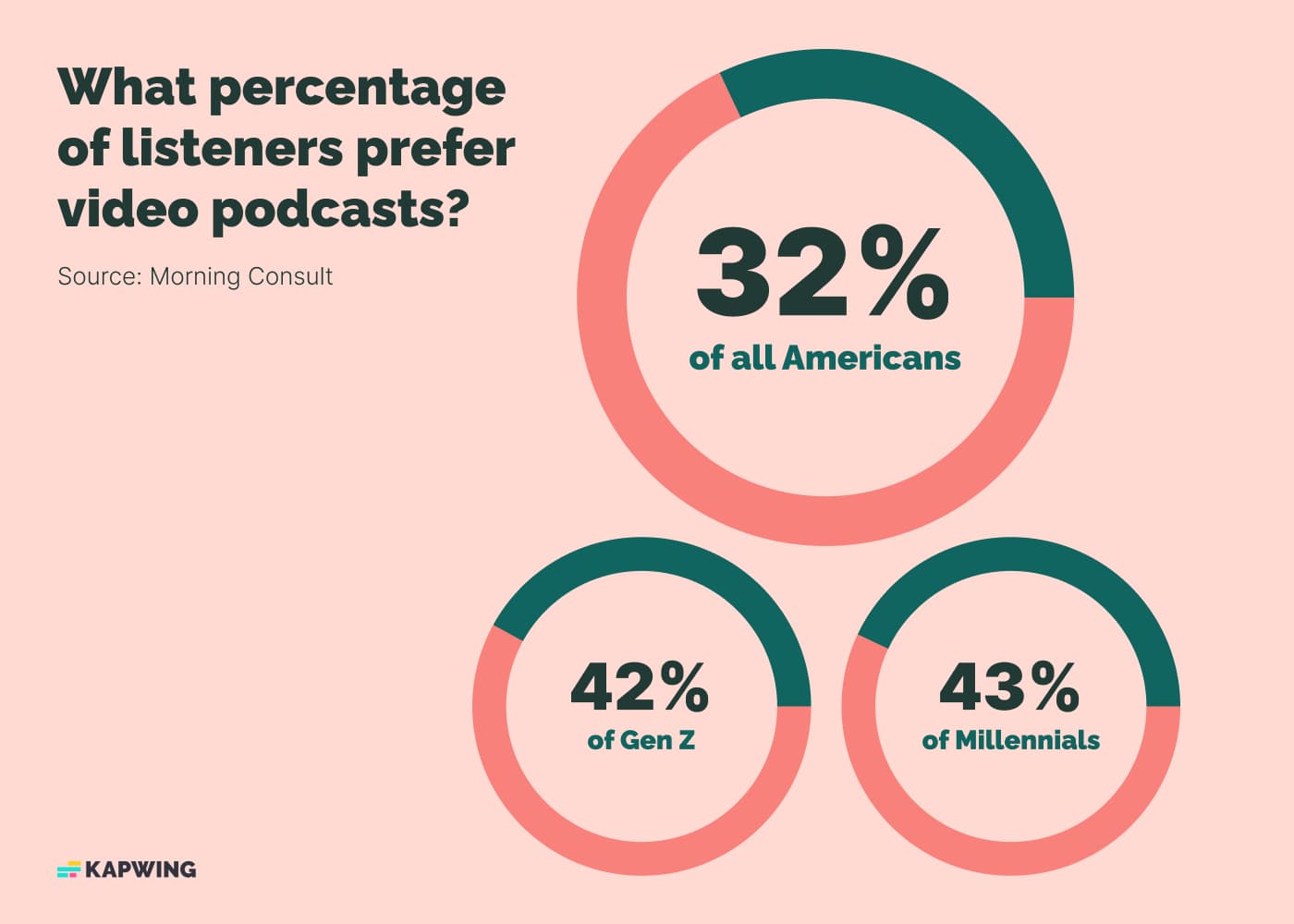
Those numbers are highest for younger listeners, with 42% of Gen Z preferring video podcasts, along with 43% of millennials.
The benefit of a video podcast is that listeners can actually see the faces of the hosts and guests, which helps form an emotional connection. Forming that connection will have listeners coming back again and again for new episodes.
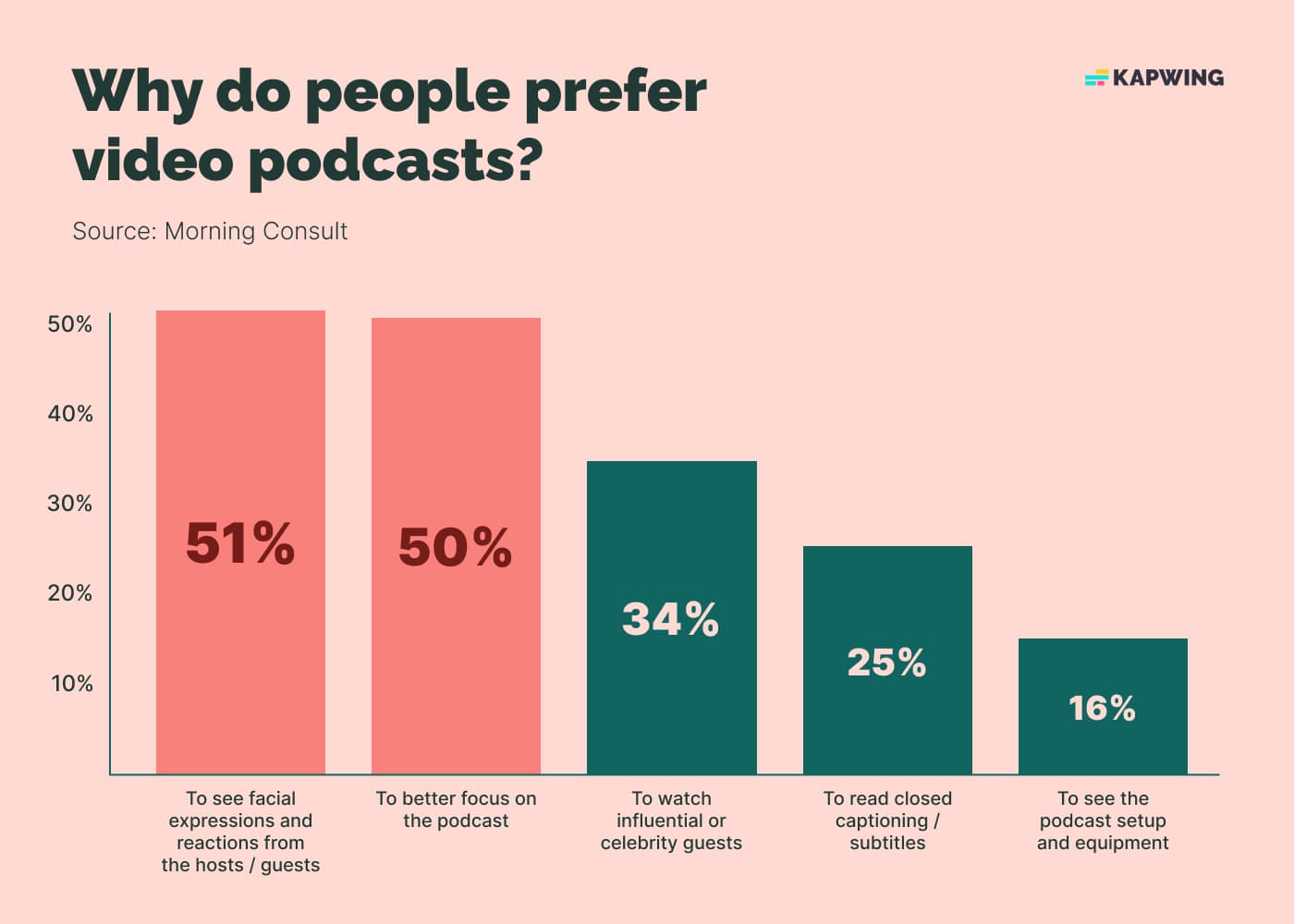
According to that same Morning Consult data, 51% of video podcast viewers like to see the hosts’ facial expression, and 50% say video helps them focus better on the podcast.
Visual storytelling
When you create a video podcast it adds a new dimension to storytelling because you’re now able to have visual cues and nonverbal communication.
You’ve probably experienced recording a podcast and having a funny moment in the studio that just doesn’t translate to audio. Video podcasting remedies this.
Additionally, you can strengthen your storytelling by editing in charts, photos, b-roll, or other visuals with a video podcast. Every video element you add makes your podcast that much more watchable.
Expand your reach
Audio podcasts have many places they can live, from Apple, to Spotify, to apps like Stitcher. The common thread is that they’re all mediums that specialize in audio. But with video podcasting, your episodes can live in more places (and therefore reach more people).
YouTube, TikTok, and other social media platforms have become very popular places to post video podcast clips, or even full episodes. In fact, one in three podcast listeners prefer YouTube as their primary platform.
Posting video podcasts on these platforms allows you to engage with new listeners who may not have been seeking out audio podcasts to begin with.
Video podcasting is a great additional channel for distributing your brand's message, especially as part of a robust content atomization strategy with a focus on video formats.
Monetize your podcast
Creating a video podcast also opens up exciting new revenue opportunities. Traditionally, podcasters make much of their revenue from ads placed in their shows. But, if you’re posting on a platform like YouTube, you now open the possibility for your podcast to earn ad share revenue through the YouTube Partner Program.
Also, advertisers are even more willing to work with you if you’re publishing across multiple platforms. If you can show a listenership both from your RSS syndication and videos on YouTube or TikTok, you can command higher rates for ads.
The Rise of Video Podcasting
The popularity of video podcasting is on the rise, and platforms and producers have certainly noticed.
As we noted above, YouTube has become a primary destination for podcasts, and specifically video podcasts. In 2021, YouTube appointed Kai Chuk as Podcast Lead, in charge of managing podcasts on the platform. Reportedly, this was in response to a rise in video podcasts on the platform and YouTube wanted to make sure they were supported.
Spotify has also aggressively expanded its support for video podcasts. In April 2022, it opened up the ability to post a video podcast to all shows in select markets, including the US, Canada, and the UK. Shows are able to upload and syndicate video podcasts using RSS just as they would audio podcasts. Spotify also beefed up its support for video podcast analytics, subscriptions, and embeds, as well as monetization options.
When listening to a podcast with video on Spotify, the app now automatically pops up a video player.
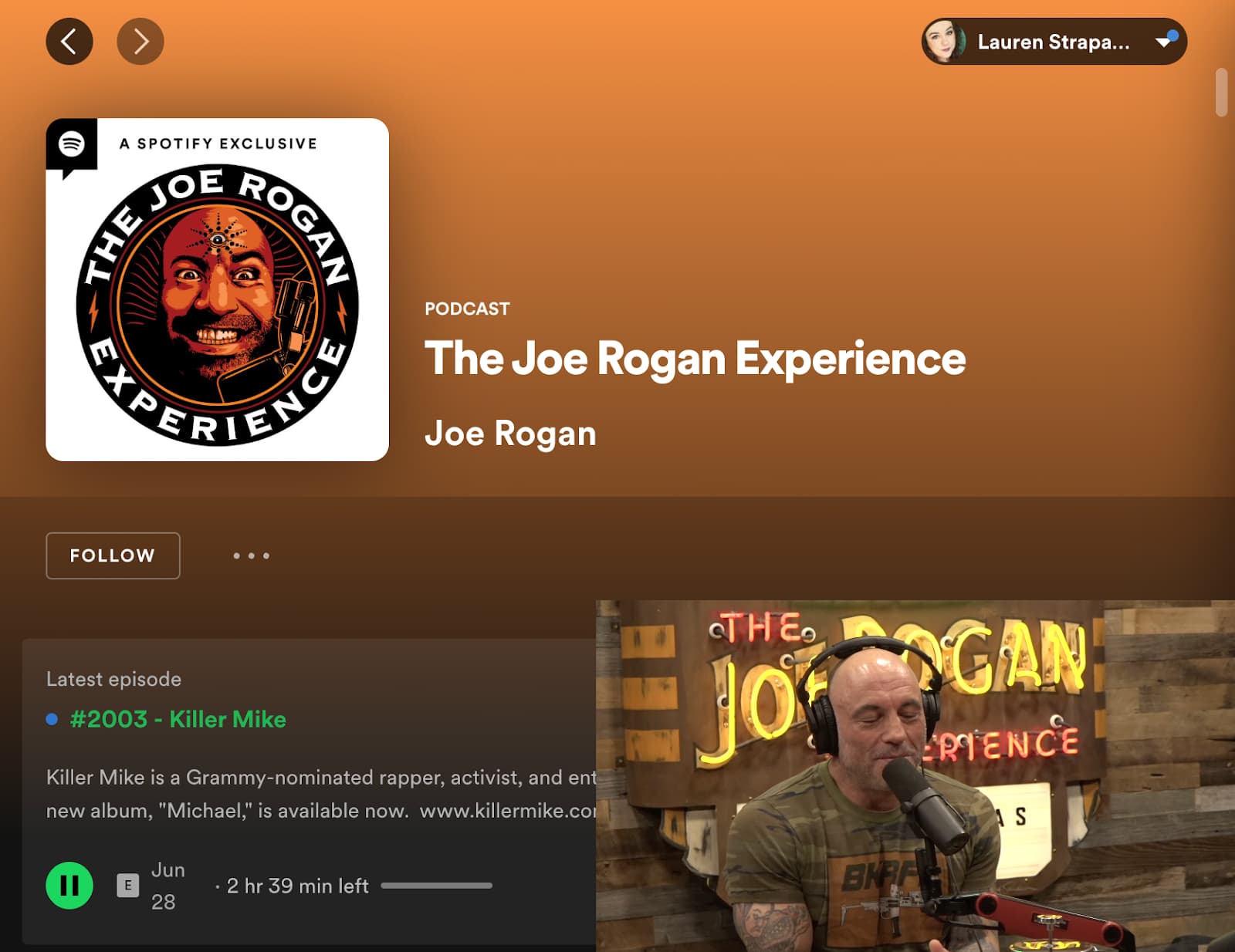
Apple Podcasts also supports video podcasts, and anyone can distribute their podcast using RSS on the platform for free.
The surprising new player where podcasting has taken off is TikTok. Given the time limit of 10 minutes (although TikToks that long are very rare), it’s not a destination for entire episodes. But video podcast clips have become wildly popular on TikTok.
The tag #podcast has 96.9 billion views on TikTok, and #podcasts has 4.6 billion views.
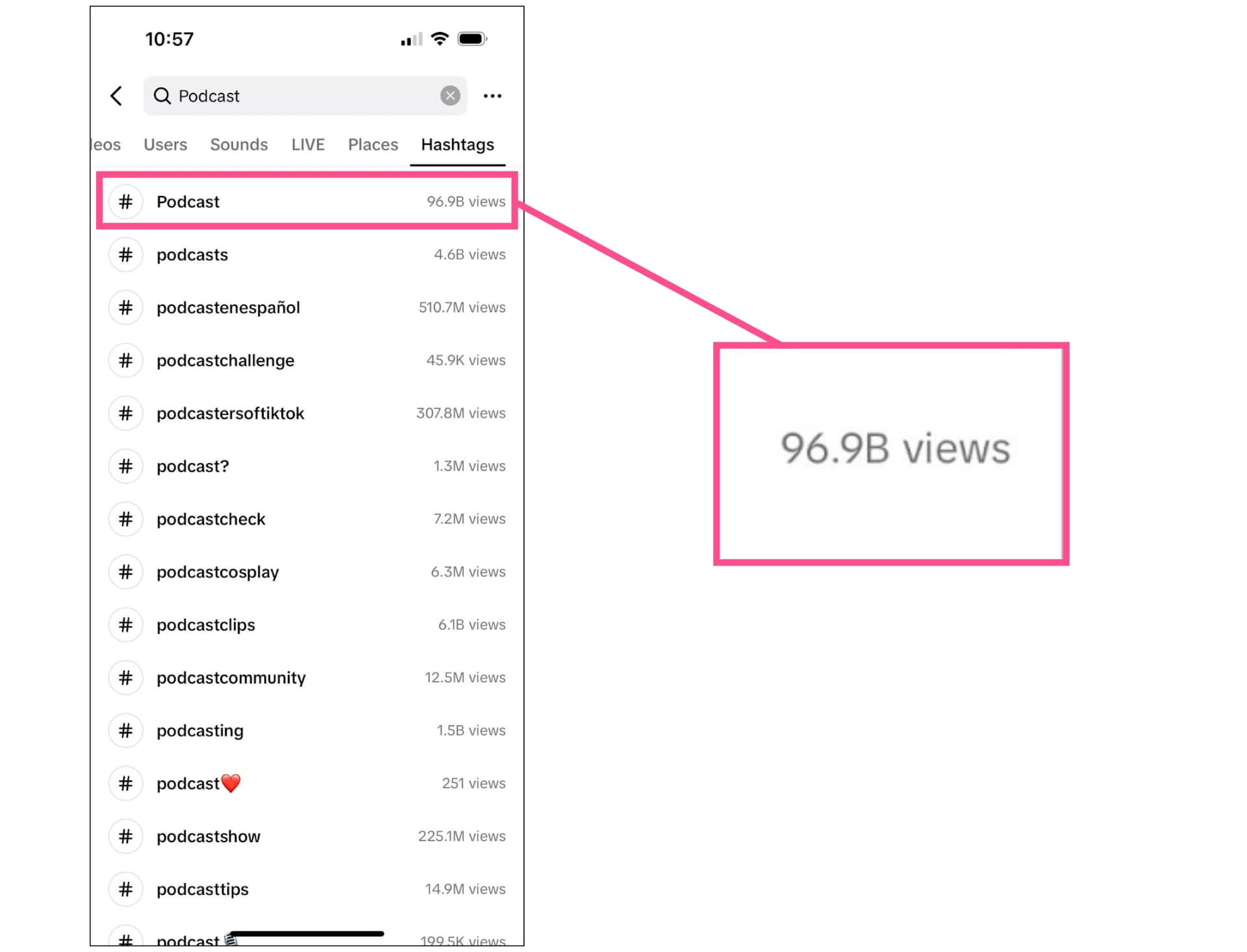
TikTok’s format also makes it an ideal platform for mini-podcasts — episodes that are under 20 minutes.
Video podcast moments on TikTok have even gone massively viral as memes. A clip of Julia Fox pronouncing the movie title Uncut Gems in a funny way blew up on the platform and it was actually a clip from the video podcast Call Her Daddy.
Watch on TikTok
The Growth of Video Podcasts
Video podcasting has exploded in popularity, and we have the numbers to prove it.
According to Spotify, there were 70,000 video podcast creators on the platform as of March 2023 “with a lot more on the way.” Many of their premier programs, like The Joe Rogan Experience now publish with video. Even Julia Fox seems to have learned a lesson from her viral video podcast moment, and her own podcast Forbidden Fruits will include video for its second season.
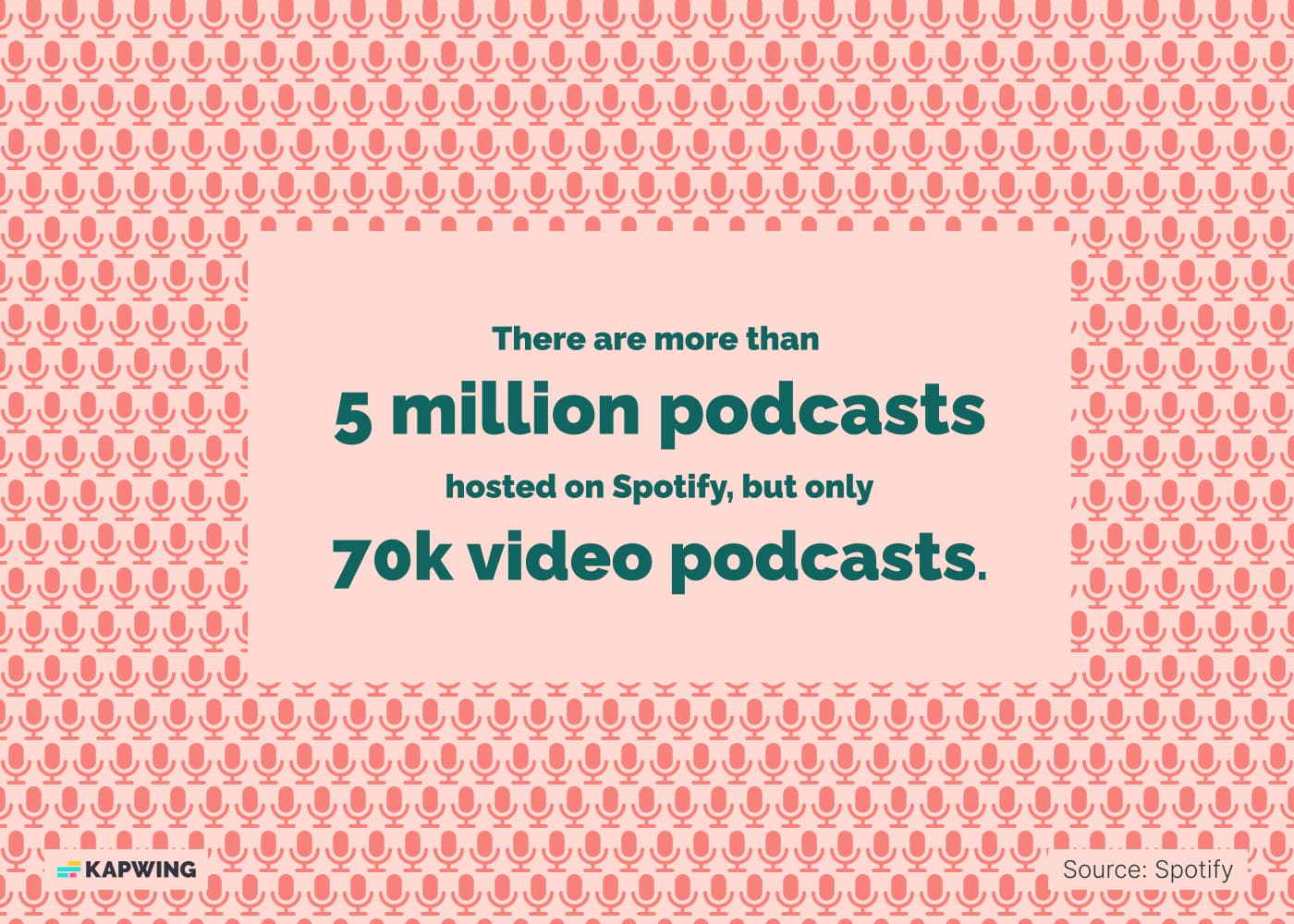
For context, there are more than five million podcast titles on Spotify. That means creating a video podcast now still makes you a relatively early adopter, allowing your show to stand out.
YouTube is also feeling the pressure. We already know that YouTube has the highest listenership for podcasts of any platform, and of course, since it’s YouTube, those are video podcast listens.
YouTube has created incentives for podcasters to join the platform, including grants of up $50,000 for individual shows, and grants of up to $300,000 for podcast networks.
There’s good reason to invest. According to Grand View Research, the global podcast market was valued at a very impressive $18.52 billion USD in 2022 and is only expected to grow. You can’t blame YouTube for wanting a piece of that.
Part of the rise of video podcasting comes down to the style of this video content and the type of video editing used. While some video podcasts are just a simple static visual with audio laid over top, the best video podcasts actually show the hosts on camera and get creative with their video editing software.
According to YouTube itself, 80% of the top-watched video podcast episodes on the platform feature the hosts on video. As well, video podcasts that include the hosts have twice the views of ones that just show a static image.
In fact, legacy media podcasts that publish on YouTube are seeing stagnant listenership numbers on the platforms because they don’t include video.
Add that all up and it becomes clear that video podcasting is the future of podcasts and a smart strategy for growth on any platform.
Successful Video Podcast Case Studies
Let’s take a look at three podcasts who have made a name for themself by including video content.
The Basement Yard
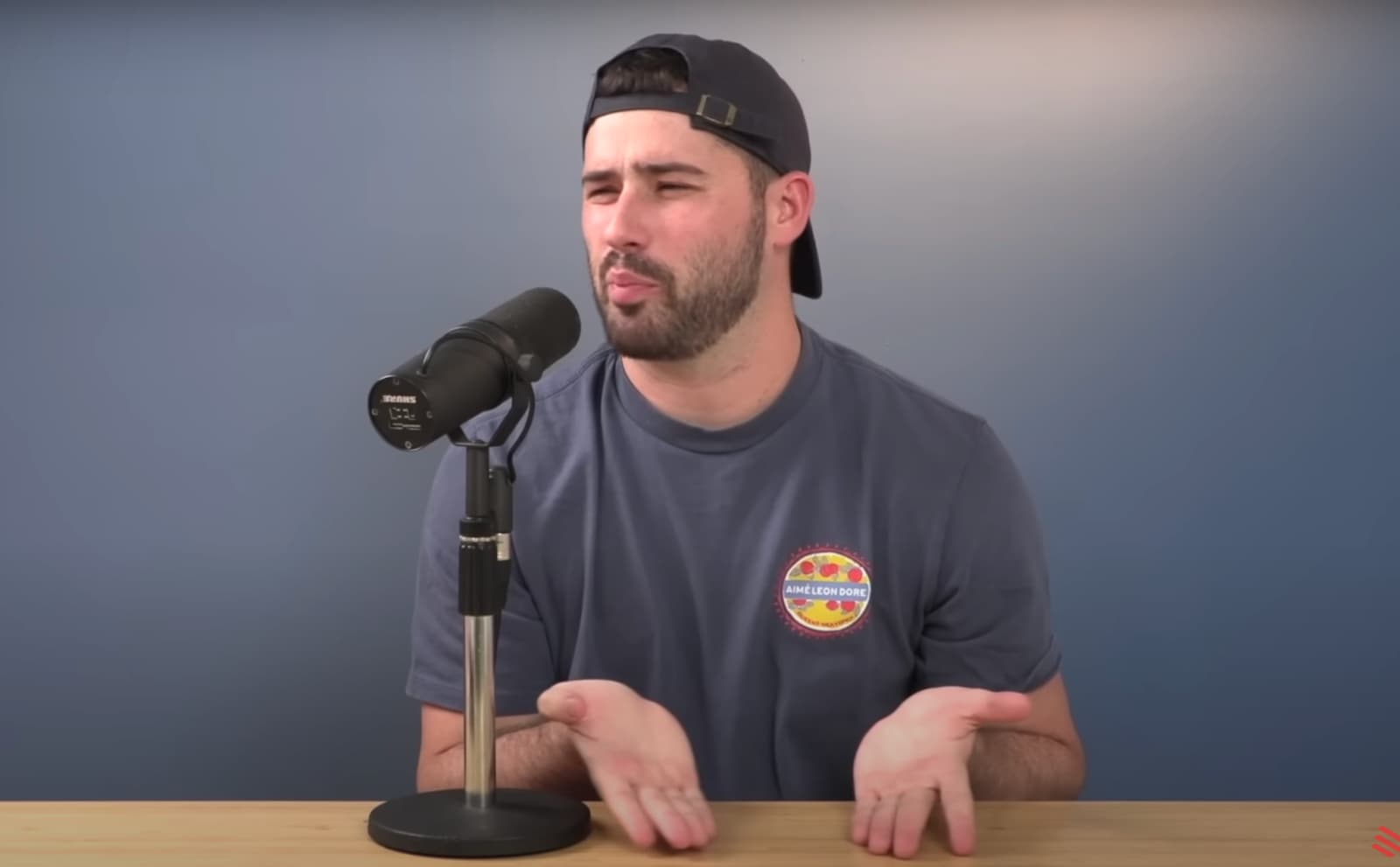
The Basement Yard has over 400 episodes that mainly feature childhood best friends Joe Santagato and Frank Alvarez talking about current events and being their funny selves.
The podcast can be found syndicated across the internet, including Spotify, Apple, and other providers. But it’s their video presence that really blew up the show.
The Basement Yard has 488,000 subscribers on YouTube, where new episodes are posted each week with video that shows the hosts talking to each other.
And over on TikTok, they’ve been even more successful. Their account has 3 million followers and more than 121 million likes.
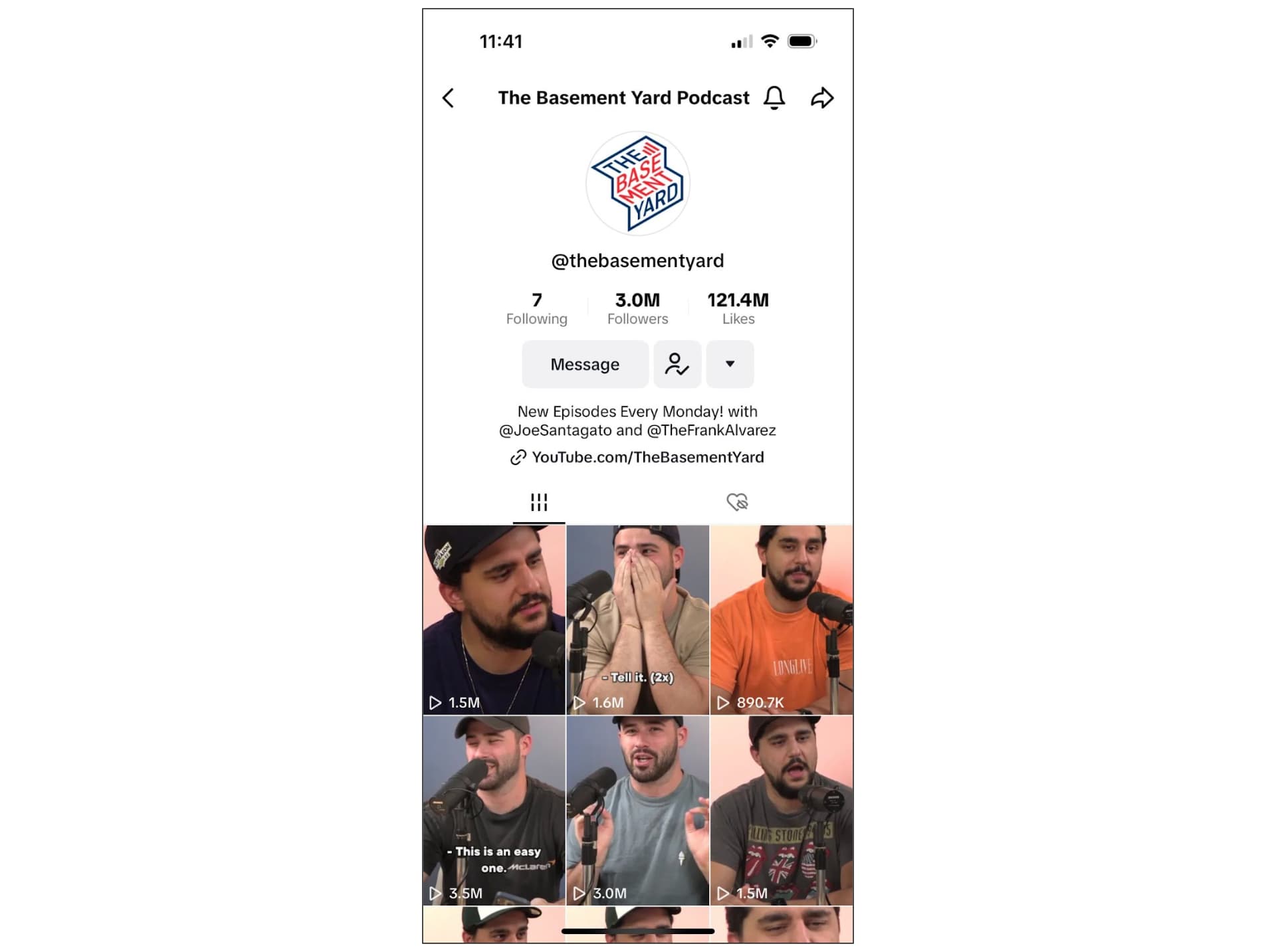
They use their TikTok account to post the funniest clips from the show, usually just the two hosts having some banter. Some of these clips have millions of views and they enhance these clips by always including subtitles. Clips of the show are often also reposted by accounts dedicated to sharing funny podcast clips.
As well, they release exclusive video podcast episodes on Patreon, where they have more than 22,000 patrons.
The Basement Yard’s activity on TikTok has in turn grown their video podcast audience, turning TikTok fans into podcast fans.
Call Her Daddy
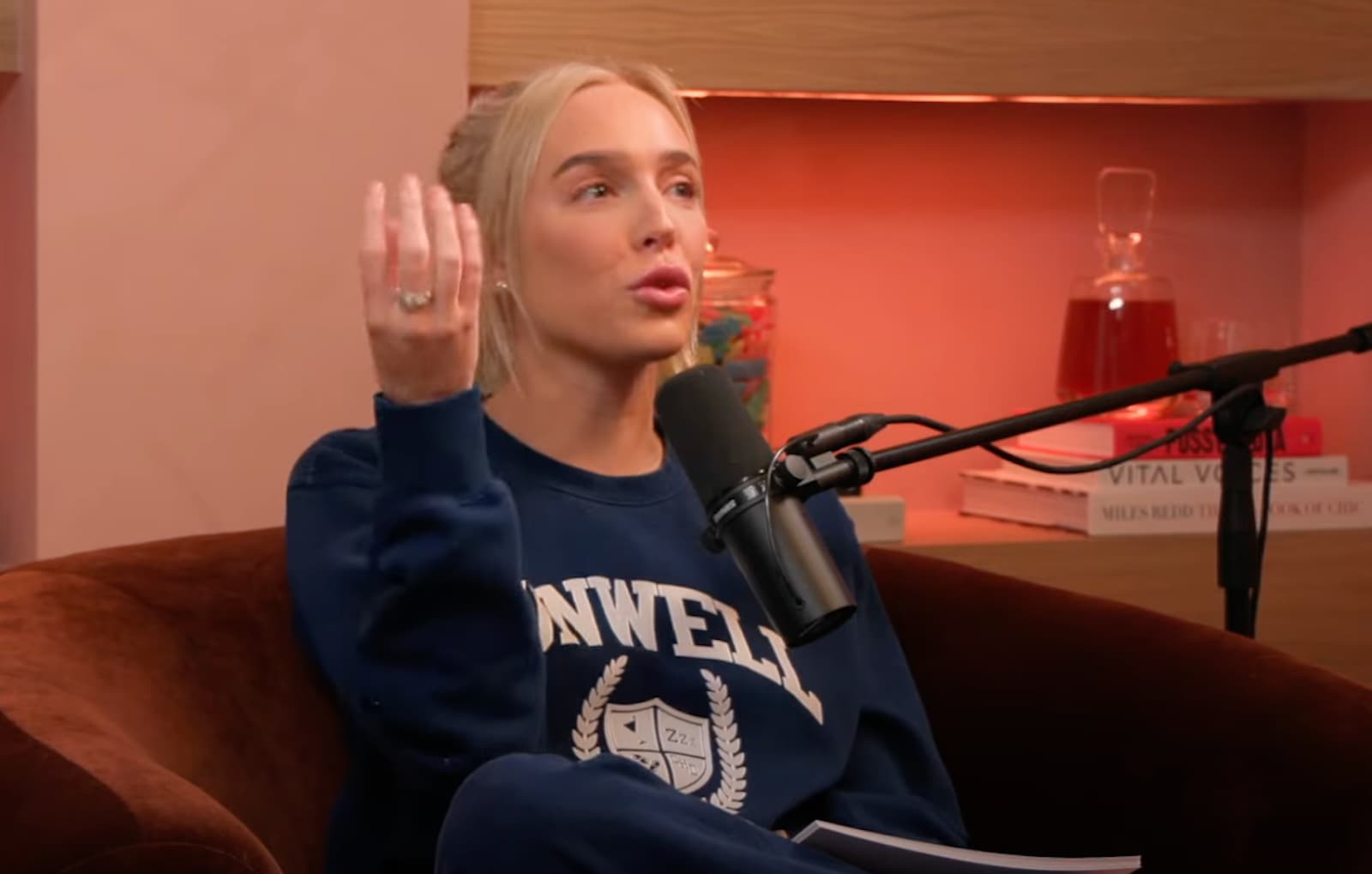
Call Her Daddy boasts that it’s the most listened-to podcast by women on Spotify. Hosted by Alexandra Cooper, the podcast covers relationships, social interactions, embarrassing moments, and more.
The show has also featured numerous celebrity guests, from Julia Fox’s uncah jams moment, to Kim Petras, John Mayer, Gwyneth Paltrow, and Miley Cyrus. Episodes of the video podcast stream on Spotify, allowing listeners to watch their favorite celebrities in action.
Call Her Daddy posts clips, especially interviews, on its YouTube channel.
They also post clips on an official TikTok channel that has 2.6 million followers and 68.4 million likes.
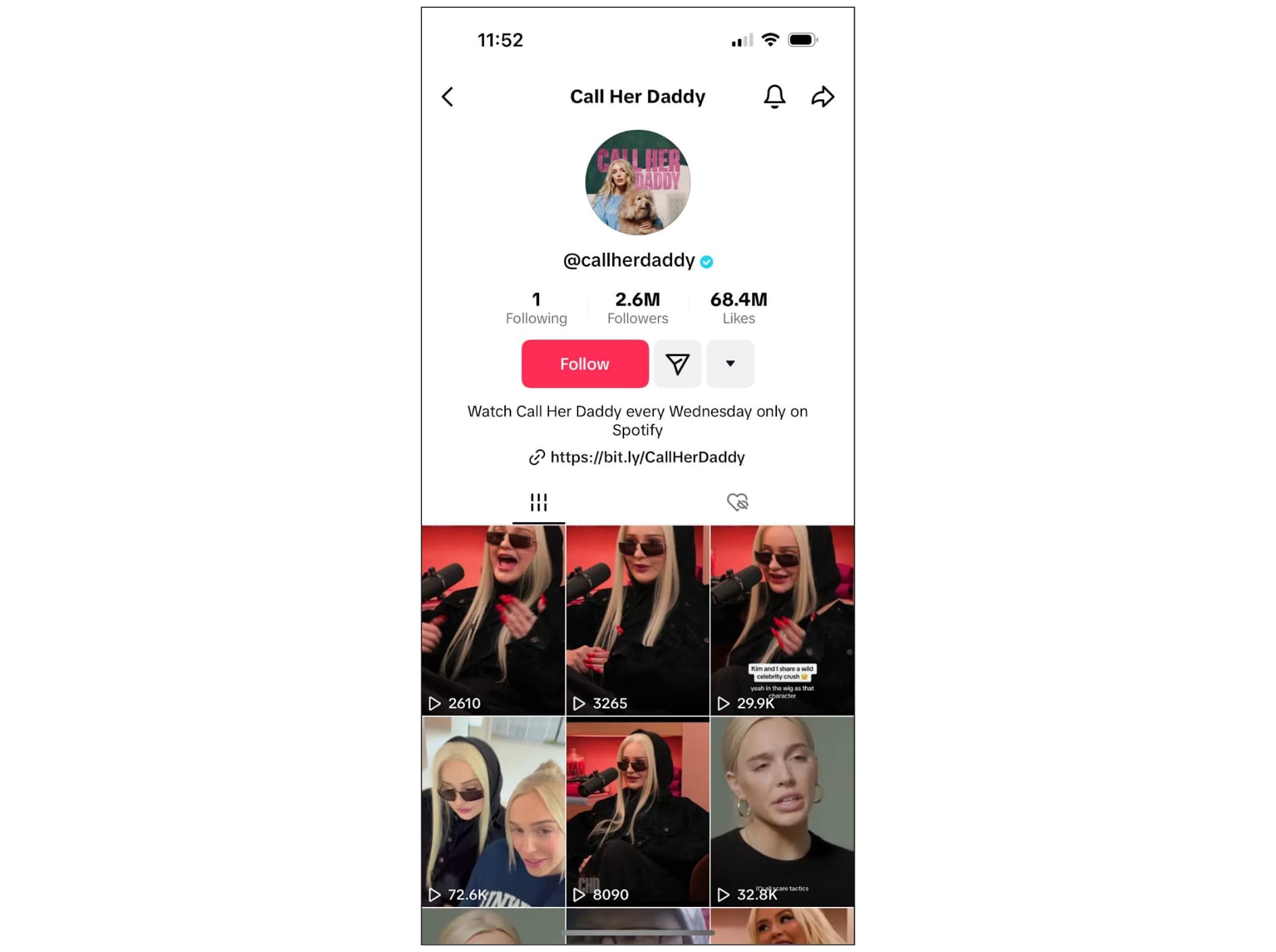
The video podcast very smartly turns every episode into multiple TikToks, meaning multiple pieces of content can be created with every weekly update. It’s also a place where the podcast can tease new episodes and special guests.
The Comment Section with Drew Afuelo
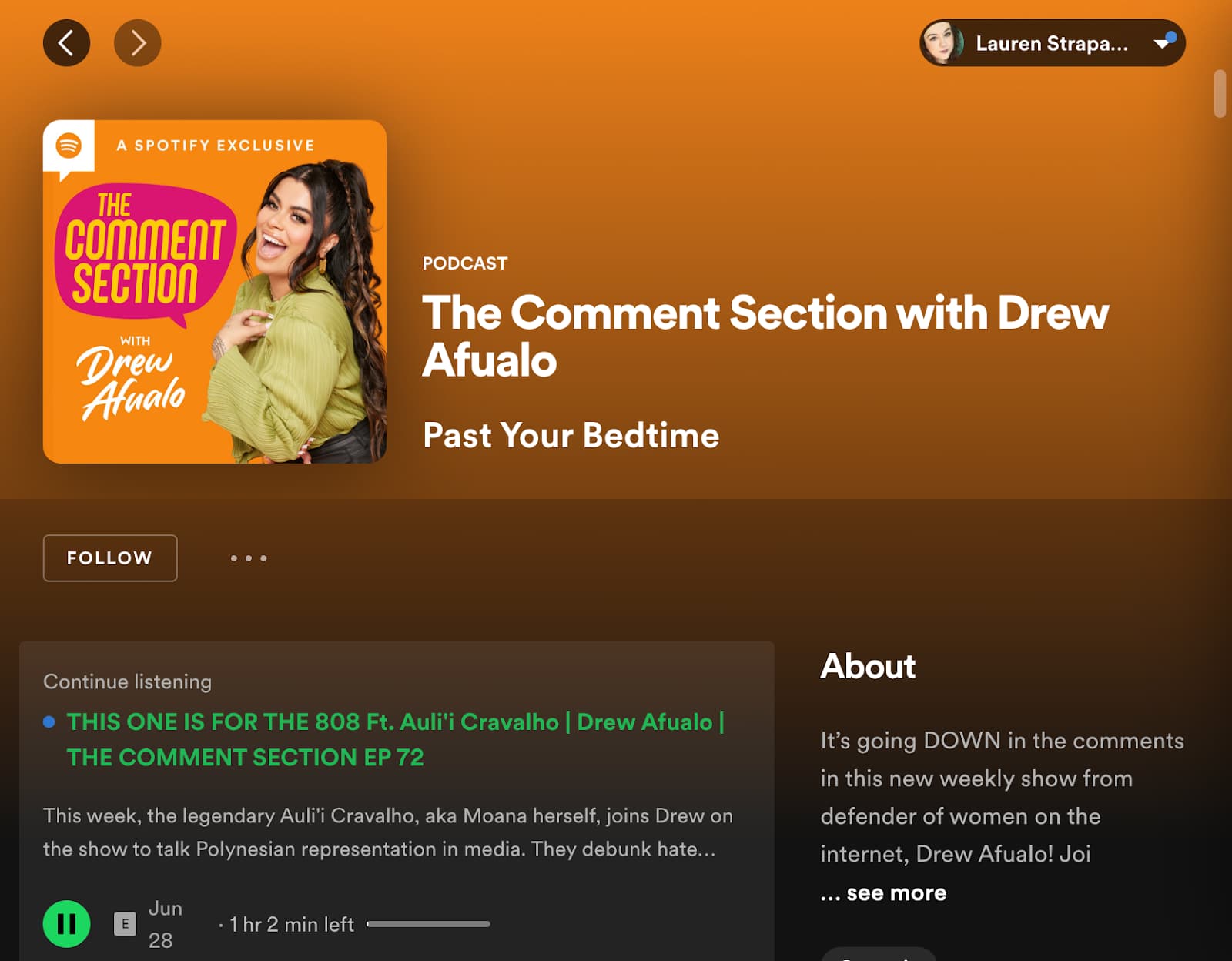
Drew Afualo became famous on TikTok for her satisfying and deliciously brutal roasts of misogynists on the platform. She now has a Spotify-exclusive podcast called The Comment Section that streams with video.
It’s a part of the Past Your Bedtime network, and new clips also appear on the network’s YouTube page.
Given that Afualo is a TikTok star, it just makes sense that her video podcast also found it’s way to TikTok. Afualo uses her own TikTok account, which has 8 million followers and more than 348 million likes, to share clips.
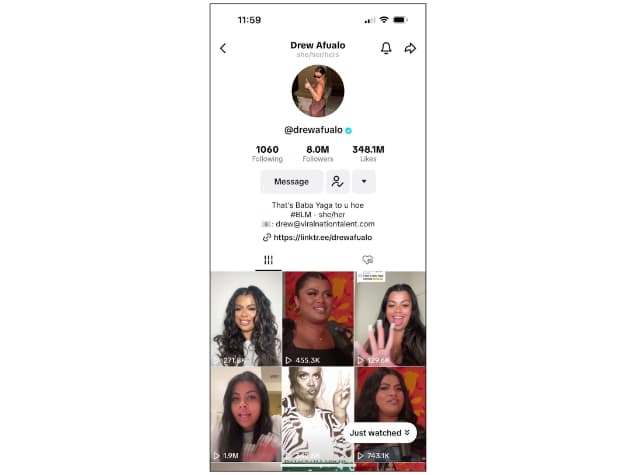
Turn Your Audio Podcast into a Video Podcast
Now you know all the great reasons to create a video podcast. They offer increased engagement, new platforms for distribution, new opportunities for revenue, and you’ll be on the cutting edge of where podcasts are going.
Adding video content to your podcast show isn’t hard if you have the right tools. In addition to a podcast editor, you’ll want to add a video editor like Kapwing to your tech stack.
Using Kapwing as your video editing software will give you access to a tools that can resize video, as well as a subtitle generator so no one misses a word. Your video podcast can be reformatted and optimized for YouTube, TikTok, or Instagram Reels.
Turn your audio podcast into a video podcast and see where your own podcast can go next.
Video podcast FAQ
Can a podcast be done as a video?
Absolutely! Any podcast can be turned into a video podcast. Some shows simply upload the audio with a static image, but engagement and watch rates are much higher if you record and share video of the hosts talking to each other.
What is a podcast with video called?
A podcast with video is simply called a video podcast, or a vodcast.
What equipment and video editing software do you need for a podcast video?
For a video podcast, you’ll need video equipment in addition to your audio equipment. That can be done with a DLSR, or even something as simple as a smartphone. You’ll also need video editing software, like Kapwing, which can resize your videos for different video platforms and you can add a video element or two like a static image or b-roll. Lastly, you need a place for your videos to live, such as a YouTube or TikTok account, in addition to uploading each video podcast to where you syndicate, such as Spotify. Here’s a video podcast equipment checklist for reference.
How do I record a podcast video?
Most video podcasters record their a video podcast by setting up cameras when they record the audio for each show. You can have all hosts in a single frame, or set up a camera pointed at each podcast host. It’s a good idea to add good lighting, or shoot somewhere that already has strong natural lighting. Aim to have high-quality video for each video podcast episode. It’s important that you also have high audio quality, so it’s smart to use a device that creates a separate audio file.
Do video podcasts do better?
According to that Morning Consult data, 46% of regular podcast listeners prefer to consume a video podcast. As well, 51% of of video podcast viewers like to see the hosts’ facial expression, and 50% say video helps them focus better on the podcast. It’s worth noting that laying audio over a static image is the least-liked video podcast format. It’s better to use video podcast software and show the hosts on camera. Create a video podcast and see the engagement numbers rise for yourself.
Additional Resources:

